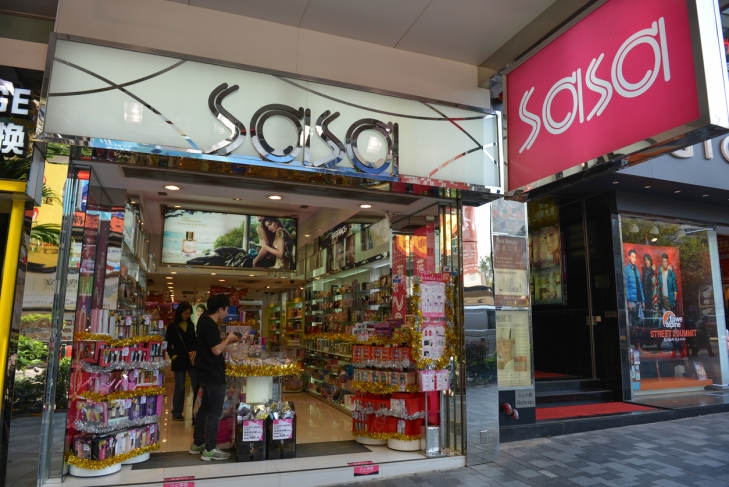
The Hong Kong-based cosmetics chain’s e-commerce and branding mis-steps led to its withdrawal from the island state
Twenty-two became a somewhat unlucky number for Hong Kong-based cosmetics retail chain, Sasa, for its Singapore operations in 2019. That was the year – 22 years after it entered the market – that it decided to close all of its 22 stores on the island.
In a press release in December 2019 – just before COVID-19 made an already difficult situation even worse – Sasa said it was ceasing operations in Singapore to “concentrate its resources on the markets in the Hong Kong and Macau SARs, Mainland China and Malaysia, as well as its e-commerce business”.
That decision was easy to justify: Hong Kong and Macau accounted for nearly 85 percent of the company’s sales of HK$8,376 (US$1,080 million) in 2018/19. E-commerce generated less than five percent of its revenues but over 90 percent of that came from China.
Sasa-ffering
Operations in Singapore had been likely to shut for years. The brand’s position as a discount store made it difficult to mark up prices to cover high rental and staff overheads in a mature market like Singapore. Given how the majority of its outlets were situated in high-rent shopping malls, Sasa ended up having “ordinary store[s] … in … high-cost locations[s]”.
The shopping experience was often less-than-premium. Its stores in Singapore tended to have narrow aisles, which made it difficult to explore its merchandise offerings. Shoppers also posted on social media that sales assistants at its outlets glared if they ventured to test or touch the few tester products on display. Others posted that Sasa staff would “follow two steps behind” customers, making them feel ill at ease, while the general sentiment was that the sales staff were more interested in netting sales than “help[ing] consumers discover and find the right products”.
That might have been forgiven if the merchandise was appealing; it was not.
Sasa had ignored the growing popularity of the experiential and activity-based offline retail model that helped draw customers to physical shops. As early as 2008, it had chosen to dispose of its beauty services business to focus on its “core retail and brand management businesses”.
In contrast, rival Guardian Pharmacy had partnered with Olive Young, the largest Korean health and beauty retailer, to organise a “Myeongdong Street” beauty shopping event, and a pop-up event at Singapore’s Ion Orchard shopping mall in 2019, featuring four Olive Young house brands that had previously not been available in Singapore.
Furthermore, the company’s customer loyalty programme was less than compelling. To qualify for Sasa’s VIP tier, shoppers had to either buy S$120 (about US$85) worth of products in a single receipt or make accumulated purchases worth S$300 (US$215) over three consecutive months.
In comparison, the equivalent level, called the Black Tier, for rival Sephora’s loyalty programme required customers to spend the same amount – S$120 – over 12 months, which was more achievable and less intimidating.
This neglect of branding was perhaps its biggest misstep. Where rivals like Sephora had successfully established itself as an upscale brand despite entering the Singapore market much later in 2008, Sasa presented a lower value proposition overall. Sasa had dropped the proverbial ball by failing to sufficiently market the popular Korean brands (such as Banila Co. and Chosungah22) that it carried. Consequently, many consumers ended up being unaware that these brands were available at its stores.
Moving out of Singapore
Even before COVID-19 thrust e-commerce into the spotlight, Sasa’s digital strategy had been underwhelming. Up until the announcement of Sasa’s exit from Singapore, some shoppers were not even aware that it had e-commerce channels like its mobile app in place. Whereas Sephora had 136,000 followers on Instagram and another competitor Watsons Singapore had in excess of 50,000 followers, Sasa had only around 14,000 followers in comparison.
What made it worse was that brands exclusive to Sasa, like Suisse Programme, Dr. G, and Cyber Colors, had not generated much online chatter. This was detrimental to Sasa since more than 60 percent of respondents to the Daily Vanity Consumer Survey 2019 had indicated that they would not consider purchasing a product if there were no online reviews about it.
While the closure of Sasa Singapore’s stores was not expected to have much impact on the company as a whole, Hong Kong’s 2019 “summer of discontent” had dealt a more deadly blow to its fortunes. The unrest has led to a massive plunge in the number of Chinese tourists entering the former British colony. Since this consumer group had now come to form a considerable portion of Sasa’s customer base, its total turnover was slashed by 35 percent for the second quarter ended September 2019.
As COVID-19 threw a major spanner into the works, Sasa will be looking to prop up its core markets in an increasingly uncertain market environment. Until then, an old Chinese saying perhaps best describes the possibility of a Lion City comeback: 留得青山在,不怕没柴烧 (translated as “where there is life, there is hope”).
This is an adapted version of the SMU Case, "When the Customer Is Not Queen: The Cautionary Tale of Sasa Singapore". To see the full case, please click on the following link: https://cmp.smu.edu.sg/case/4396
Follow us on Twitter (@sgsmuperspectiv) or like us on Facebook (https://www.facebook.com/PerspectivesAtSMU)
Last updated on 29 Jun 2020 .

